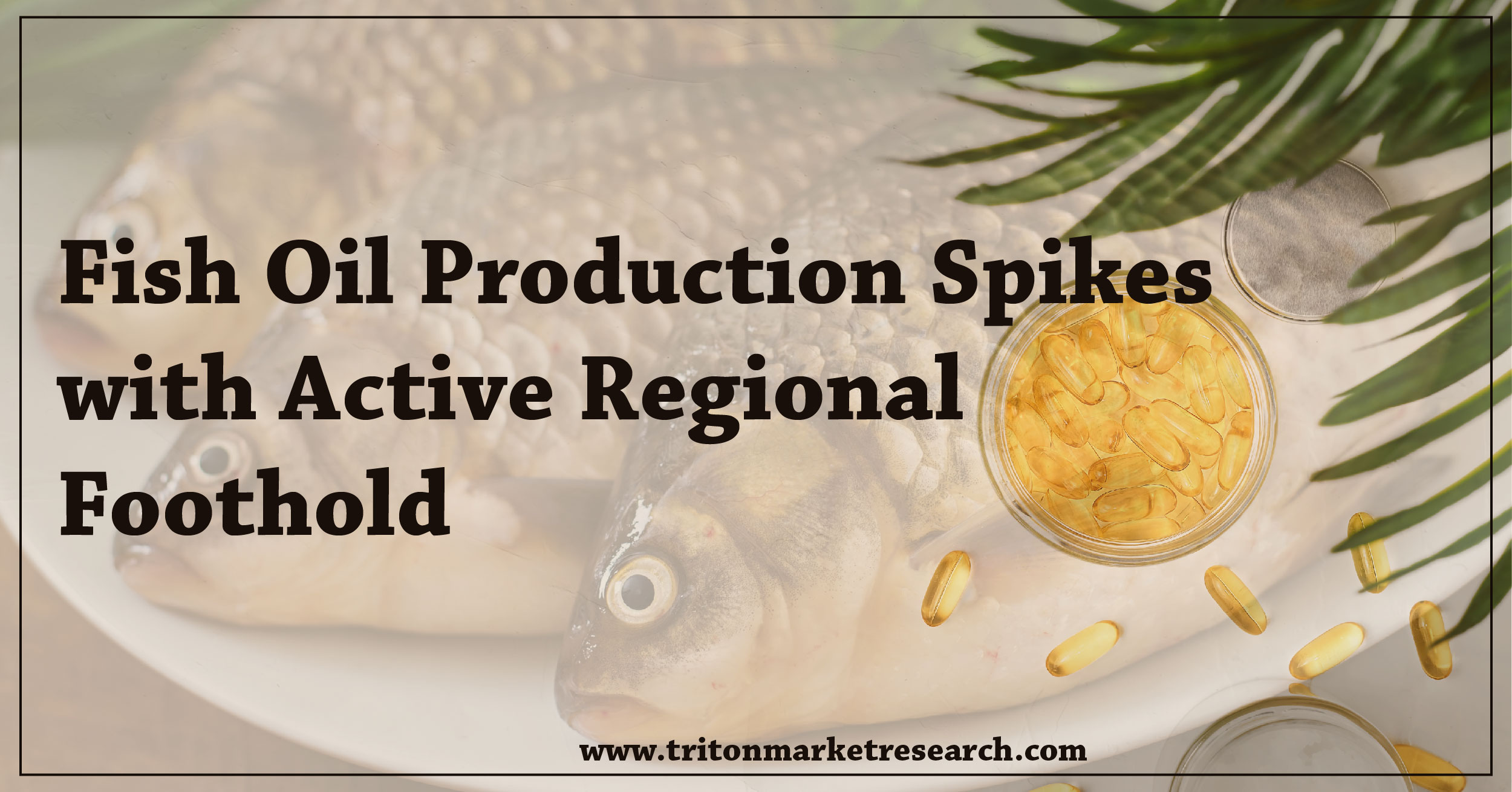



08, June 2021

The ongoing trend of health-consciousness among the consumers due to rising chronic diseases has tilted the attention towards the supplements and dietary segment. A human body requires certain essential acids for its normal functioning, which include omega-3 fatty acids. Since our body cannot produce omega-3, it is consumed as a dietary supplement, extracted from fatty or oily fish like salmon and tuna.
The significant traction in fish oil consumption expanded its research developments and usage in improving the cardiovascular system. This has encouraged several companies to enlarge their nutraceutical product line. Besides, estimates suggest that the demand for crude fish oil for dietary supplements will account for 50% of today’s global fish oil supply by 2025.
Based on our research, the global fish oil market is set to surge in terms of revenue and volume at a CAGR of 5.62% and 3.41%, respectively, over the estimated period 2021-2028.
The current market scenario reflects that regions have established opportunistic footings in the market, attributing profitable, fast-tracking fish oil production.
North America has emerged as a promising market for fish oil in the global scenario. With the rising demand for omega-3 fatty acids, the use of fish oil has surged in pharmaceuticals, supplements, and functional food applications. Moreover, health departments like Health Canada highly recommend using fish oil in pharmaceuticals and supplements, amplifying its consumption rate.
In Europe, Germany’s fish oil demand is fulfilled by taking a different route. To explain, the waste product utilization concept undertaken by the country has enabled firms to convert fish waste into value-added omega-3 fatty acids supplements. Interestingly, sustainable fishing practices have helped in developing fish-oil-based supplements that are of environmentally compliant standards.
Among various producers, China is considered to be the world’s largest producer of fish oil. Presently, the country is concentrating on producing high-quality pharma-grade fish oil to enhance its application in the pharmaceutical sector. Furthermore, in reference to the data, more than 55% of the global aquaculture industry is based in China, which supports the massive production of fish oil as a key aquafeed ingredient. What’s more, China exports fish oil to other countries across North America and Europe, increasing its prominence in the global trade setting.
While fish oils provide several health benefits, it becomes equally important to study how different species play a crucial role in providing omega-3 fatty acids.
Obtained from the saltwater of Atlantic, Indian, and Pacific Oceans, anchovy is highly concentrated with omega-3 and omega-6 fatty acids. Peru and Chile are the largest producers of anchovy fish oil, with Peruvian anchovy contributing more than 38% of the global fish oil production.
As per Triton’s estimates, mackerel is expected to grow at the highest CAGR. It is a high oil-yielding fish used in Norway and Chile. Several prominent companies sourcing crude fish oil from mackerel include Copeinca, TripleNine, and Marvesa.
This small fish species are commonly found on South American and Asian coasts. The oil sourced from sardine offers multiple health benefits, such as enhancing brain function and maintaining anxiety levels. Besides, 90% of the fish oil in India is produced from sardine and is used for several industrial applications like paint manufacturing and varnish. In terms of production, Mukka Sea Food Industries and Coastal Aquatic Proteins are leading companies producing sardine fish oil within India.
Considering the role of various species, it has become imperative for companies to focus more on innovative fish farming techniques to develop omega-3 rich products. This points towards the implementation of AI, machine learning, and big data to optimize automation in aquaculture development. For instance, Microsoft, ABB Ltd, and fish farm operator Norway Royal Salmon ASA are steering AI solutions to track the growth of fish populations remotely.
In view of such initiatives based on innovative technologies, the fisheries can expect to witness transformative growth while opening new prospects for fish oil producers.

Prevalent cases of terrorist attacks in today’s world is increasing the need for severe standards of security for public safety, and the global market for biometric technology scrupulously accommoda..
Prevalent cases of terrorist attacks in today’s world is increasing the need for..